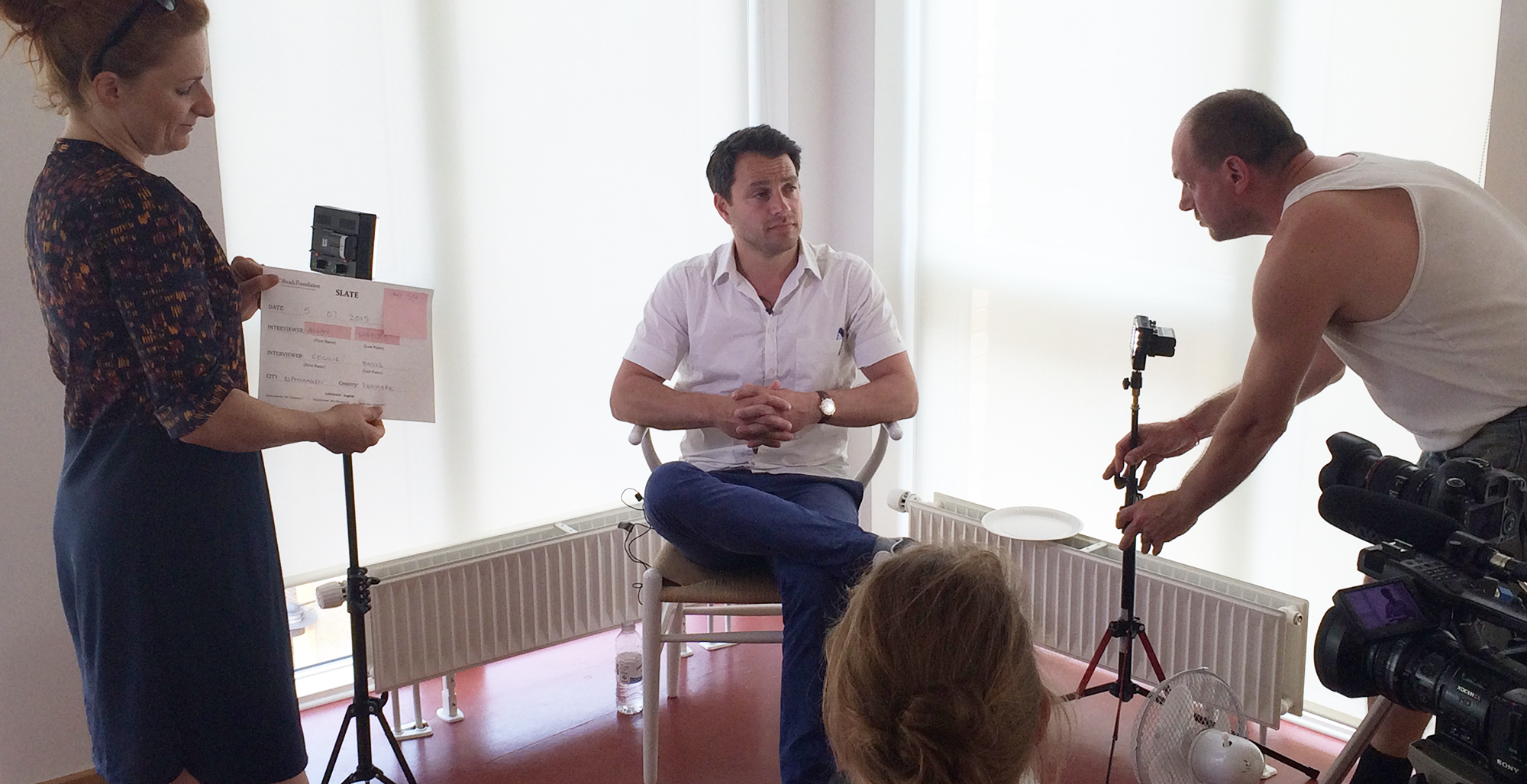USC Shoah Foundation Records Testimonies About Current Anti-Semitism in Copenhagen

Unfortunately it is becoming an all too familiar scene: A man with a gun opened fire at a bat mitzvah celebration, killing a security guard and injuring two police officers.
Leaders of USC Shoah Foundation and its board of councilors were appalled by the act of violence in Copenhagen. They recognized that anti-Semitism was once again on the rise in Europe, and Jews were being targeted.
With 53,000 testimonies of genocide survivors in its Visual History Archive, the Institute staff understood the danger of dismissing the shootings as random acts of violence. The Institute recognized the patterns of history, and knows that ignoring the problem only helps perpetuate it.
The Institute also knows what a powerful tool testimony is to stopping the growth of hate and intolerance.
At a time when antisemitism is on the rise, USC Shoah Foundation’s Countering Antisemitism Through Testimony program aims to push back against its spread. The Institute has been recording video testimonies of people whose lives have been disrupted by contemporary acts of violent or virulent antisemitism, as well as experts on the matter and advocates who have made a dedicated effort to counter the hate. This video includes excerpts of testimonies from survivors and witnesses of a synagogue attack in Copenhagen that USC Shoah Foundation recorded for this new collection.
“Watching testimony is a transformative experience,” said Stephen Smith, executive director of USC Shoah Foundation. “It’s impossible to listen to the stories of survivors and to look into their eyes and not come away changed.”
And if testimony of genocide survivors can change minds, why not take testimony before the roots of genocide are able to take hold? And so the Institute decided to try something different. The Institute would interview people who witnessed the events in Copenhagen less than a year after they happened, as well as re-interview a number of Holocaust survivors who originally gave their testimony during the 1990s to assess how they view anti-Semitism today.
With funding for a pilot given by USC Shoah Foundation board members and other supporters, the Institute worked with colleagues Allan Shapiro and Bent Bludnikow in Copenhagen to reach out to survivors and witnesses of the anti-Semitic attack on Feb. 14, 2015. With support from the Danish Jewish community, the interviews were all conducted at the Great Synagogue in Copenhagen, and included the survivors, the mother of the bat mitzvah girl, the chief rabbi of Denmark, local community members, a journalist, a scholar of Holocaust and genocide, and a Danish citizen of Palestinian descent who organized a peace circle around the Synagogue in the aftermath of the attack.
For many of those participating, it was a labor of love. Testimonies were taken in a windowless room on the hottest day in memory. And community members volunteered to help translate the testimonies and hosted the interviewees.
Bludnikow, a Danish historian and journalist who was also interviewed, said each person brings a unique perspective to the story.
“Every time you write or read about these things, you realize your history is only a little piece of a much broader history,” he said. “Everybody has a personal viewpoint. Every person has a marvelous story that we can learn from.”
The Institute is now planning its next step and deciding what a new collection of this type would look like. It is in the process of evaluating the best way to include these contemporary voices into the Visual History Archive so they can be used to educate people about the dangers of violent extremism.
As the Institute pursues funding to move this testimony project from a pilot phase into an ambitious program, it remains committed to making the voices of victims of genocides and other acts of suffering a compelling tool for education and understanding.
To view clips of testimonies from this new Copenhagen collection please click here.